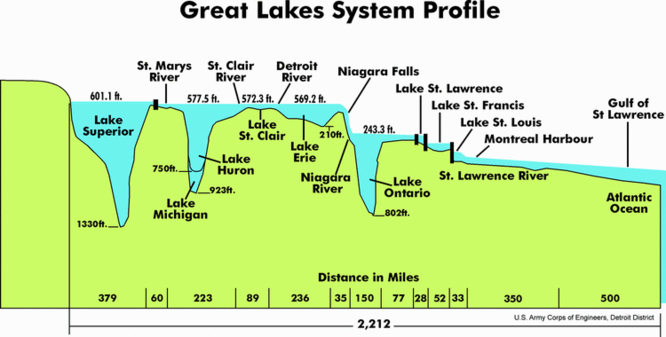 |
 |
 |
 |
 |
 |
 |
 |
|
 |
 |
 |
22 River deltas, sea coasts and reefs
|
| Menu | back |
The material washed into lakes and seas by rivers and streams allows conclusions to be drawn as to how long these processes have already lasted. It is amazing that there is not a single river delta anywhere on Earth that can definitely be significantly more than 10,000 years old. Even if one studies the current changes in lakes and sea coasts, the Earths surface, as it is today, can never be millions or billions of years old.
|
|
|
The Amazon transports 500 million tons of material per year into the Atlantic. As a result, the shelf in the estuary area of the Amazon is raised every year by about 50 m above the surrounding shelf. Under todays conditions, it would have taken about 14,000 years to deposit this volume. If it is considered that the Amazon washed much more material into the sea during the formation of the Andes than it does today, then this figure must again be drastically reduced. In a good 3,000 years, todays shelf off the estuary of the Amazon will be filled up to the seas surface.
|
|
|
The Mississippi transports around 300 million tons of material yearly into the Gulf of Mexico. On the basis of this volume, the gulf would have to be completely filled after eight million years. In truth, however, there is only a relatively small river delta of 50 km in length at the end of the river. Some advocates of a billion year old world say that the material washed down sinks continuously into the sea. Yet there is no trace of it in the drill cores that have been made in the seabed. Such drillings have been made all over the gulf, not to calculate the age of the Earth, of course, but in an attempt to find oil.
|
|
|
The Niagara Falls cliffs, due to the large volume of water, eroded 1.5 m each year. The waterfall is therefore shifting gradually in the direction of Lake Erie. From the distance from Lake Ontario (11.5 km) one can conclude that the Niagara Falls are, at the very most, 10,000 years old (1).

Cross section of the Niagara Falls and the Great Lakes from which their water originates.
|
|
|
On Englands Atlantic coast material is constantly being eroded due to the action of the waves. As a result, the coastline is moving inland at an average rate of one metre every six years. That means that after only a few million years, England would have completely disappeared. Interestingly, over the whole island group, countless fossils are to be found, which, by conventional reckoning, are supposed to be several hundred million years old (2). This timetable must be viewed critically.
|
|
|
In North Carolina (USA), in certain places the sea is eating away up to 4.2 m of land per year. On the other hand, the ancient town of Ephesus in present day Turkey was still, up until less than 2,000 years ago, a seaport, while today it lies several kilometres inland. These shifts underline the pace of geological events (3).
|
|
|
On the basis of the amount of gravel and sand being introduced, the Vierwaldstättersee (Lake Lucerne) in Switzerland will be completely filled in 4,000 years at the most. The Bodensee (Lake Constance) will not exist for more than 10,000 years from now.
|
|
|
Also in respect of the growth of limestone reefs, the consequences of a million-year-old Earth history are completely missing. The growth of the Zechstein reefs can be explained. Today, on the banks of the Bahamas, limestone particles are washed up, forming microbial mats; lamellae of approximately one millimetre per day are formed (4). There are approximately fifty lamellae in 17 mm of carbonate; using a simplified calculation, that only adds up to around 500 years development time for the highest reef (some 60 m) in Thuringia (5).
|
|
|
Until recently, the Carbonates of the Upper Jura (also called the White Jura or Malm), which have grown up to 200 m in height, were predominantly interpreted to be sponge reefs. Nowadays no comparable reef structures are known outside of the seas. Disbelief in this suspicious uniqueness and new studies carried out in the course of the last two decades have led to new approaches in reef limestone research. One can assume that, in the future, sedimentation processes will be increasingly used for model conceptions of the formation of reef limestone. Concerning the time question, carbonate sands as sediments, especially in energy-rich moving shallow water, form substantially faster than grown reef structures (6).
| |
These 23 | Menu |
back
|
References:
|
| (1) |
Larry Pierce, Niagara Falls and the Bible, Creation 22 (2000): pages 813, http://www.creationontheweb.com/content/view/276/. |
| (2) |
A. Phillips and Tall Order, Cape Hatteras Lighthouse makes tracks, National Geographic 197(2000): pages 98105. |
| (3) |
Tas Walker, Vanishing Coastlines, Creation Ministries Magazine 29, No. 2 (March to May 2007): pages 1921. |
| (4) |
C.D. Gebelein, Distribution, Morphology and Accretion Rate of recent sub tidal Algal Stromatolites, Bermuda, Journal of Sedimentation and Petrol 39, pages 4969. |
| (5) |
K. Kerkmann, Riffe und Algenbänke im Zechstein von Thüringen, Freiberger Forschungshefte (1969): 252. |
| (6) |
M. Stephan, Neue Interpretation der Massenkalke des süddeutschen Oberjura, Studium Integrale (October 2001) pages 9194, http://www.wort-und-wissen.de/index2.php?artikel=disk/d08/4/d08-4.html. | |
| |
Comment this Site!
|
 |
 |
 |
 |
|

